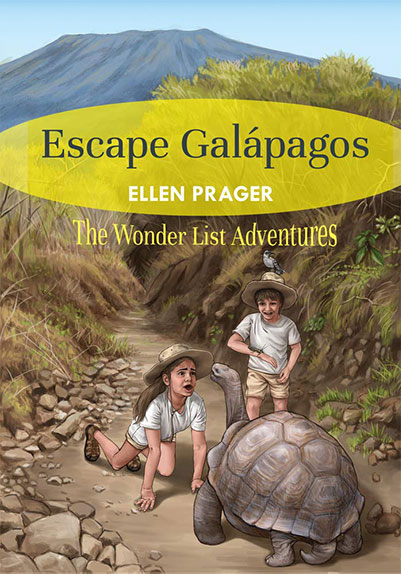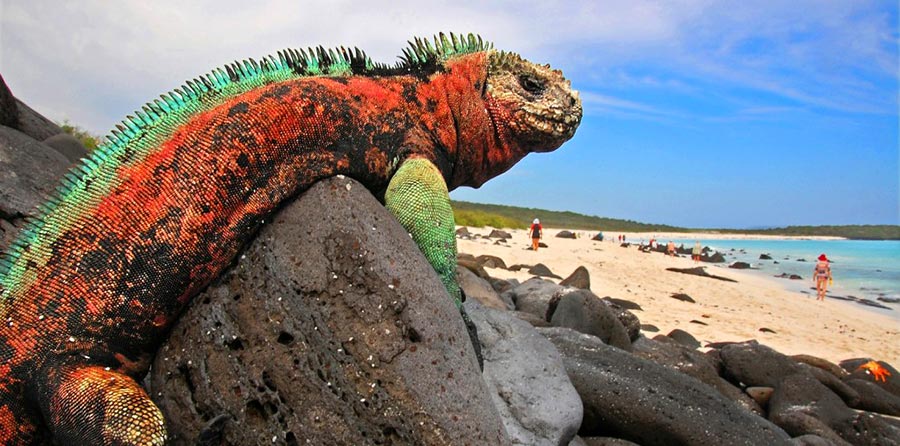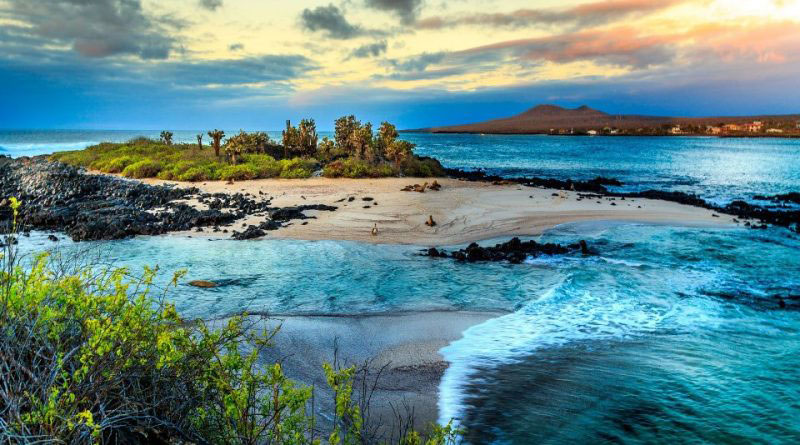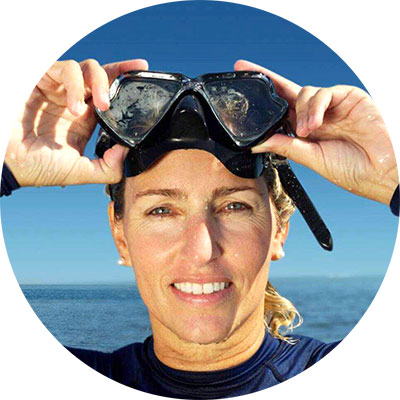As a marine scientist, work has often been synonymous with adventure, from living undersea for two weeks to scuba diving in the Bahamas, Caribbean, Papua New Guinea, Fiji, and the Galápagos Islands. I’ve taught oceanography at sea aboard tall sailing ships for six weeks at a time and ran a marine laboratory on a remote island in the Bahamas. People are often curious about my life as a marine scientist and the one place that everyone always asks about is the Galápagos Islands.
Whether as a student learning about Charles Darwin and his voyage and collections aboard the HMS Beagle or from watching outstanding films and television that showcase the islands’ wild setting and unique wildlife, almost everyone has heard of and is interested in the Galápagos.
With such interest and because people, both young and old, continually ask me about the Galápagos Islands and its unusual wildlife, I decided it was the perfect setting for the first book in a new series for middle graders (The Wonder List Adventures) that combines adventure and humor with relatable characters with typical teenage angst, and comes with a fun dose of science — Escape Galapagos.

I first visited the Galápagos Islands in the 1980s as part of a research team studying the impacts of El Niño on corals in the region. Back then tourists were few in the islands, charter boats nearly non-existent, and the living conditions at the Charles Darwin Research Station less than luxurious. After a day of diving in the chilly ocean, we endured cold, sulfur smelling showers. Extraordinarily large spiders inhabited our ceiling at night but were absent when we awoke in the morning (I did not want to know where they went). We had mechanical problems, burglaries, and food was sparse and sometimes unidentifiable. But it was also an amazing adventure in a remote and wild setting full of unique and unafraid wildlife. In fact, one of the problems we faced were the playful young sea lions attempting to steal our gear or tug on our fins. It was the best problem I’ve ever had while working in the field. My time in the Galápagos also led to being hired and returning regularly as the science advisor for Celebrity Cruises small expeditions ships in the area.
Having spent so much time in the Galápagos Islands, I had a wealth of incredible stories and images to mine and elaborate on in building a fictional adventure tale. From the only true marine iguanas in the world that dive into the ocean to feed on algae and then rid themselves of excess salt by sneezing (aka flying lizard snot) to the blue-footed boobies and albatross whose courtship dances compete with the Macarena for the world’s most goofy. With playful sea lions, predatory hawks, curious sea turtles, and docile white-tip reef sharks, there is plentiful opportunity for both challenging and humorous interactions between the characters and animals (fear of wild animals comes into play for the main character). Two of people’s favorites that also included are the Galápagos penguins, which are the world’s second smallest, awfully cute, and most northerly penguins and the unusual flightless cormorants. The volcanic setting and nature of the islands also provides for adventure and testing of the characters’ determination, courage, and willingness to rely on one another. It is such an extraordinary location that at the end of the book in a section entitled, Real vs Made-Up, the reader may be surprised by what’s fiction and what is based on reality. A similar section will be in the back of all the books in the series. The story can also open the door to conversations about real-world environmental issues such as wildlife smuggling and conservation (the forthcoming books will include additional topics such as climate change and pollution).

Because interest in the Galápagos Islands is truly independent of age, the book also offers a means to get young and old reading together. Escape Galápagos is the perfect book to read and learn as a family. Adults will appreciate much of the humor in the book and will relate to the angst and frustrations of the characters as seen in their own children. There’s suspense and action that all can enjoy along with descriptions of real locations, animals, and their behaviors. Thanks to a grant from the Curtis and Edith Munson Foundation, I’m also working with partners to make visits, give fun presentations, and provide books to schools, classrooms, and students in-need.
In the works is a map-based website where readers will be able to explore the setting for each book in the series, see photographs, and investigate related scientific data. As a writer, I love integrating into stories the places I’ve been and funny things that have happened while I’ve been there and to promote literacy. As a scientist, I consider these books a new means of educating young readers and fostering interest in science and nature.
I look forward to hearing more from readers of Escape Galápagos and am currently working on book number two, which will take place in a very, very different but just as fascinating setting. Hint: Colder, lots of water, and some very different animals live there.



 Ellen Prager
Ellen Prager 